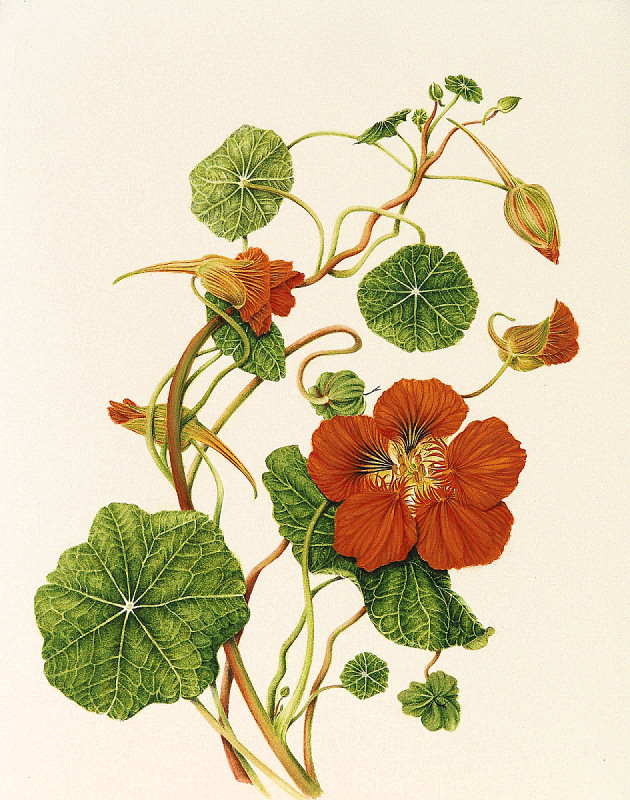Nasturtium

To Linnaeus, the venerable giver of plant names, the broad circular leaves suggested battle-shields and the the flowers reminded him of helmets stained with blood. From the Latin for trophy, Tropaeolum, the plant derived its name. Its resemblace to the peppery taste and flavor of watercress, which actually belongs to the genus Nasturtium, Latin for pungency, led to its other name—Indian cress.
If you observe the sinuous stems, translucent with sap, and the way they branch out to support leaves of varying sizes, some quite enormous, you will notice the veins forming harlequin patterns. The buds show up with a little spur, curling like a comma. And then they unfurl, slowly, tantalizingly, opening to reveal dark guiding tracks on two petals leading to nectar sacs while the three remaing serve as a landing pad for a visiting bee. When the petals eventually wither and drop, a seed remains—pale green, ridged, globular.
Commonly — and mistakenly — known as nasturtium, Tropaleolum majus is a popular favorite in gardens, borders, planters, window boxes with bursts of fiery yellows, oranges and reds. It asks for very little, thriving in poor soil and is not especially appealing to pests, except garden slugs. The brilliant flowers and leaves serve as a garnish in salads while the seeds are a good substitute for capers. All parts of the plant were used in folk remedies and legend has it that a poultice from the stems and leaves if applied to the head could prevent baldness!
Every spring I sow the seeds which eventually result in intense flame-colored flowers and magnificent leaves, spreading, climbing, trailing their way through my low-maintenance garden, smiling back at the sun.